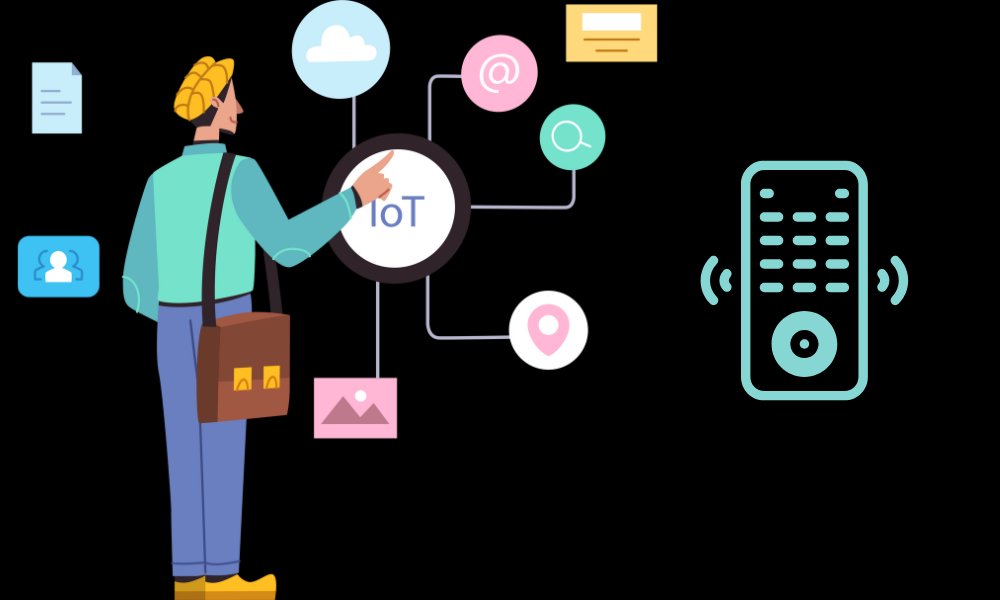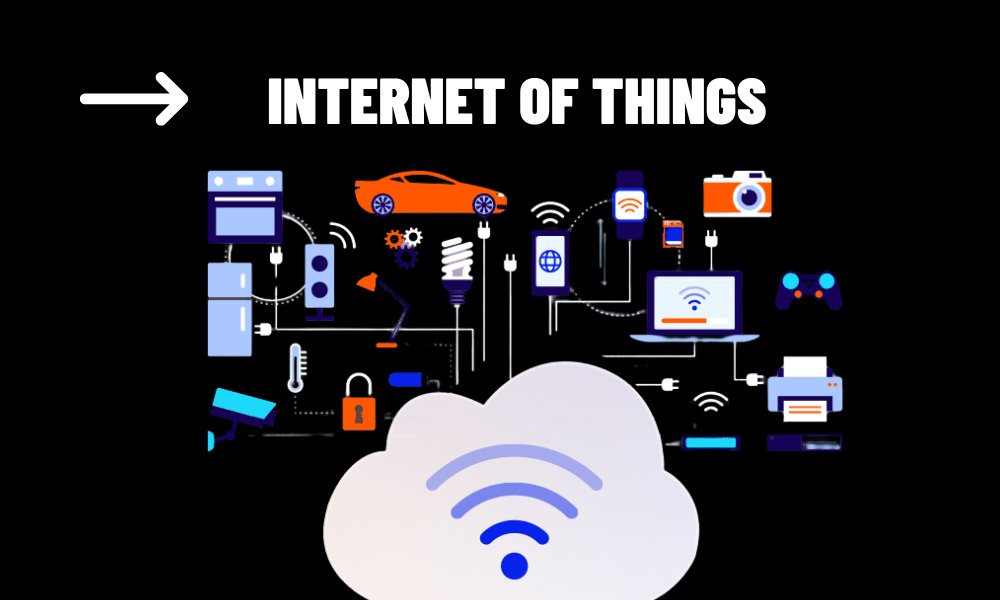The Internet of Things (IoT) is one of the most transformative technologies of the 21st century. It’s more than just a buzzword; it’s a fundamental shift in how devices and objects connect, communicate, and make decisions autonomously, all thanks to the power of the internet.
If you’ve ever used a smartphone, controlled your smart thermostat remotely, or tracked your fitness progress using a wearable device, you’ve already interacted with IoT. But IoT is not just limited to these applications—it’s infiltrating industries, homes, cities, and even our daily routines in ways that were once unimaginable.
What is the Internet of Things (IoT)?
The Internet of Things (IoT) refers to a network of physical devices, vehicles, appliances, and other objects embedded with sensors, software, and network connectivity that allow them to collect and exchange data over the internet. The idea is simple: everyday objects, often once isolated from the internet, are now able to send, receive, and process data to improve functionality, decision-making, and efficiency.
In an IoT ecosystem, devices can interact with each other autonomously or can be controlled and monitored by users through mobile apps, voice assistants, or web platforms. The devices are interconnected in a way that allows them to make smarter decisions and react to real-time data without human intervention.
How Does the Internet of Things (IoT) Work?
The magic of IoT lies in its ability to connect the physical world to the digital world. Here’s how it works:
1. Devices and Sensors
At the core of IoT is the device itself. These can range from everyday items like smart thermostats, fitness trackers, smart fridges, and wearable devices to industrial machines used in manufacturing or agriculture.
These devices are equipped with sensors that monitor certain environmental factors—such as temperature, humidity, motion, location, or pressure—and actuators that perform actions based on the data collected (e.g., turning on a light or adjusting a thermostat). These devices gather real-time data from the environment and relay it to other connected devices.
2. Connectivity
Once the data is gathered by the device, it needs a way to transmit that data. This is where connectivity comes in. The devices communicate via wireless technologies such as:
- Wi-Fi
- Bluetooth
- Cellular networks
- Zigbee
NFC (Near Field Communication)
Some IoT devices are designed to operate in areas with little to no internet connection using low-power wide-area networks (LPWANs) or 5G technology.
3. Cloud Computing and Data Processing
Once the data reaches the internet, it is typically processed in the cloud, which allows for storing, analyzing, and aggregating the data. Cloud computing services, like Amazon Web Services (AWS) or Microsoft Azure, process the enormous amounts of data generated by IoT devices and transform it into actionable insights.
For instance, a smart thermostat collects data about your home’s temperature and the time of day. The cloud service then analyzes this data and adjusts the temperature settings to maintain optimal comfort, based on your usage patterns.
4. Actionable Insights and Automation
Once data is processed and analyzed, IoT devices can take autonomous actions. This might be an automatic adjustment of settings or triggering a notification to the user. For example, a smart lock might notify you if the door is left unlocked, or a smart refrigerator could alert you when you’re running low on groceries.
The key is that IoT devices can make decisions in real-time, without needing a human to intervene every time something happens. This automation is one of the primary benefits of IoT technology.

Real-World Applications of the Internet of Things (IoT)
IoT isn’t just for smart homes—it’s already being used across various industries, revolutionizing how we live, work, and interact with the world. Here are some notable IoT applications:
Smart Homes
IoT has become synonymous with smart homes. Devices like smart thermostats, smart lights, security cameras, and voice assistants make your home more convenient, energy-efficient, and secure. Smart homes use IoT to:
Automate lighting, heating, and cooling.
Enhance security with smart locks and cameras.
Monitor energy consumption and provide insights for better energy management.
Healthcare and Wearable Devices
IoT in healthcare is changing the way we monitor and manage our health. Wearable devices like Fitbit or Apple Watch track vital statistics like heart rate, steps, and sleep patterns. In medical environments, IoT is used in:
Remote patient monitoring: IoT devices can track patients’ health in real time and send data to healthcare professionals for analysis.
Smart medical devices: Devices like insulin pumps and smart inhalers monitor and adjust medication delivery based on real-time data.
3. Smart Cities
IoT plays a critical role in creating smart cities. By connecting infrastructure, IoT is improving the quality of life in urban environments. Examples include:
Smart traffic management: IoT-enabled sensors in roads help to optimize traffic flow and reduce congestion.
Smart waste management: IoT devices track waste levels in dumpsters and schedule collection accordingly.
Public safety: IoT-connected cameras and sensors can help in crime detection and enhance emergency response times.
4. Agriculture and Farming
IoT has immense potential in the agricultural sector, improving productivity and efficiency. Precision farming uses IoT devices to:
Monitor soil moisture, temperature, and crop health.
Automate irrigation systems.
Track livestock health and location with wearable sensors.
5. Industrial IoT (IIoT)
In manufacturing and heavy industries, IoT is referred to as Industrial IoT (IIoT). It enhances processes like:
Predictive maintenance: IoT devices monitor equipment health, predicting failures before they occur and reducing downtime.
Supply chain optimization: IoT helps track goods in real time, from production to delivery.
The Benefits of IoT
The widespread adoption of IoT brings a host of benefits, including:
By automating processes and allowing devices to communicate with each other, IoT greatly improves operational efficiency. For instance, smart thermostats can automatically adjust temperature based on your schedule, saving energy and time.
IoT provides continuous monitoring and the ability to gather real-time data. This allows for better decision-making in both personal and professional contexts, from improving home energy efficiency to optimizing industrial operations.
IoT can reduce operational costs by automating tasks, preventing equipment failure, and optimizing resource usage. For example, smart meters can help consumers monitor their electricity usage, leading to cost savings.
In homes, businesses, and cities, IoT devices help enhance security by providing real-time monitoring, surveillance, and alerts. Smart cameras, motion sensors, and smart locks give users greater control and peace of mind.
Challenges and the Future of IoT
While IoT presents many exciting opportunities, there are also some challenges that need to be addressed:
With billions of connected devices, ensuring data security and protecting users’ privacy is paramount. IoT devices are vulnerable to cyber-attacks, making secure communication protocols a necessity.
Different IoT devices often come from different manufacturers, and ensuring they can work together seamlessly is a key challenge.
The massive volume of data generated by IoT devices requires effective data storage and analysis tools.
Despite these challenges, the future of IoT looks incredibly promising. As technology evolves, we can expect even more innovative applications and more advanced connectivity through 5G networks and AI integration, making IoT smarter, faster, and more capable than ever before.
The Future is Connected
The Internet of Things (IoT) is paving the way for a future where everything is connected, smarter, and more efficient. Whether in the context of smart homes, healthcare, smart cities, or industrial applications, IoT is transforming how we live, work, and interact with the world around us.
As technology advances, IoT will continue to evolve, opening up new possibilities and applications that will drive both innovation and sustainability. With better security, improved efficiency, and greater convenience, the potential for IoT to shape the future is limitless. The connected world of tomorrow starts with the Internet of Things today.

